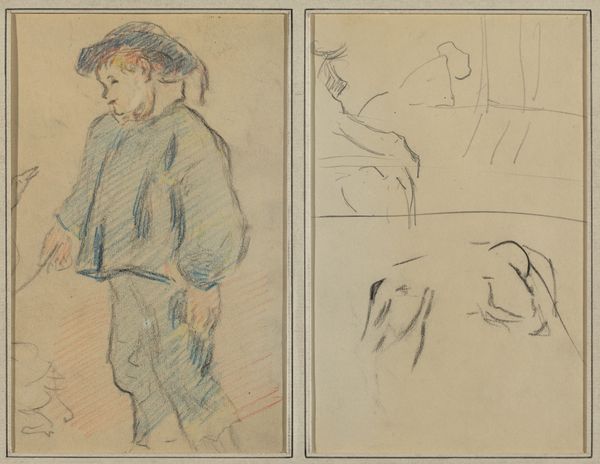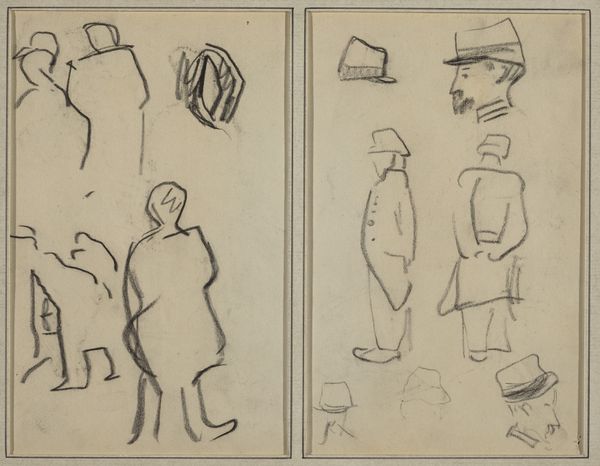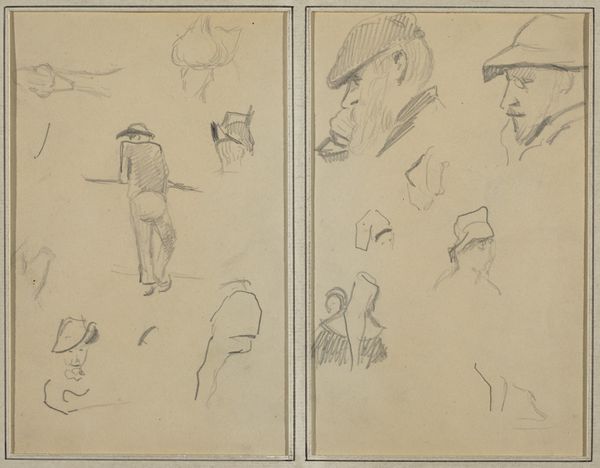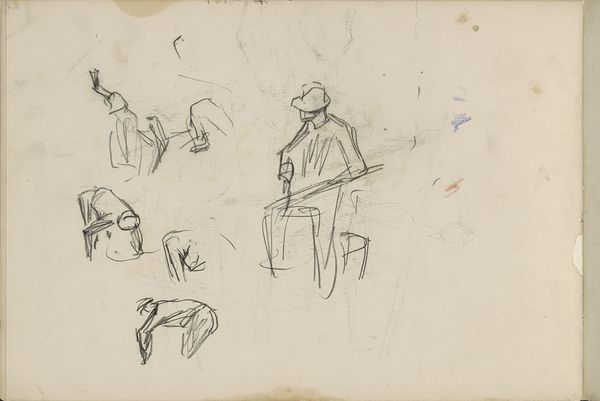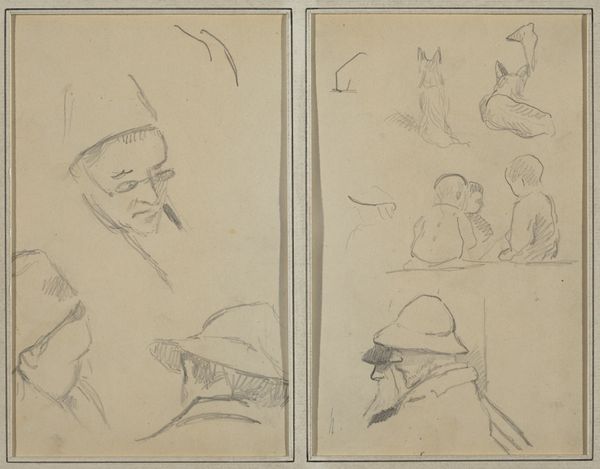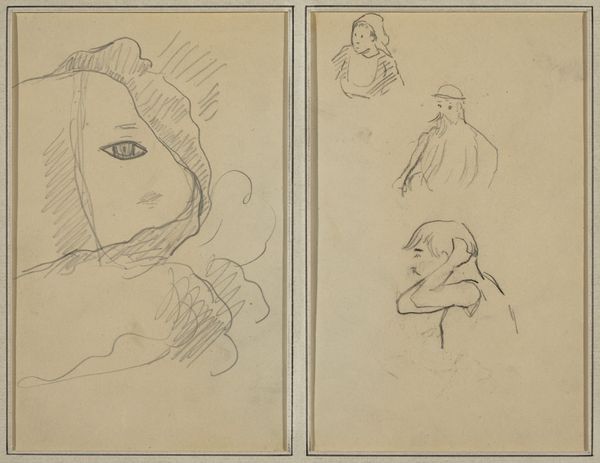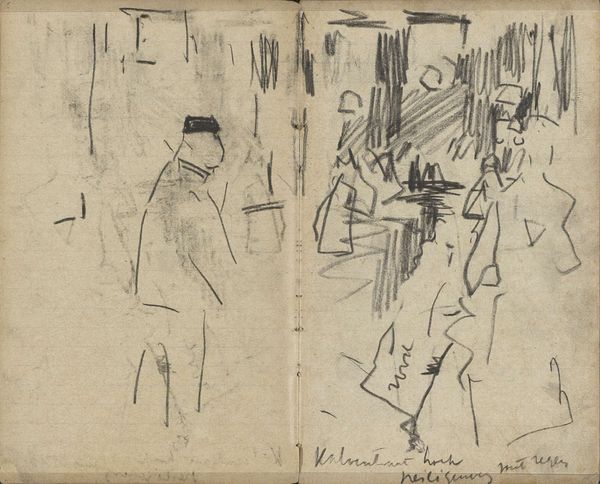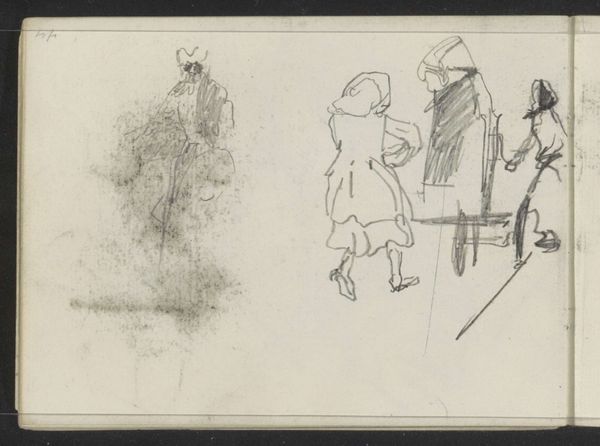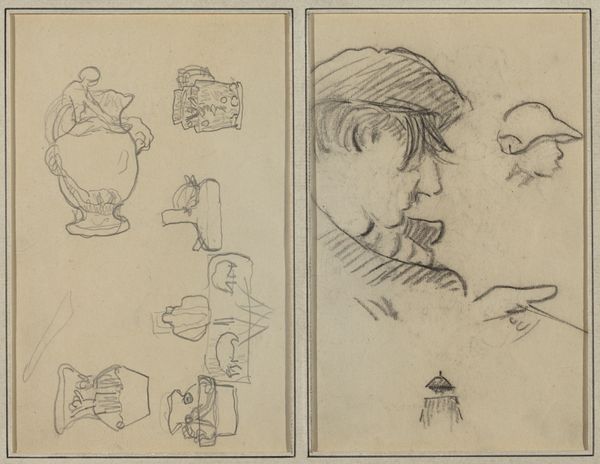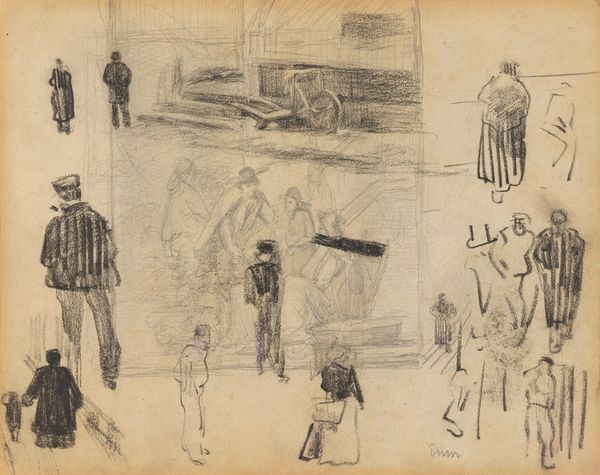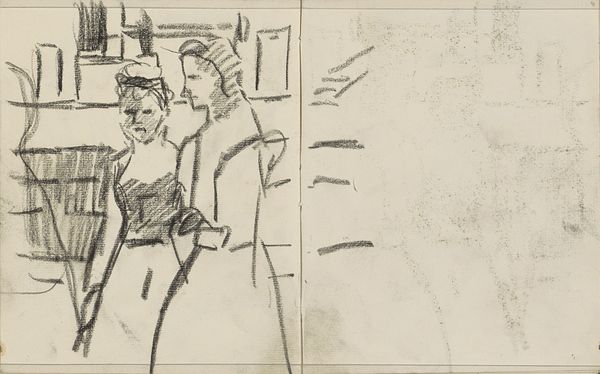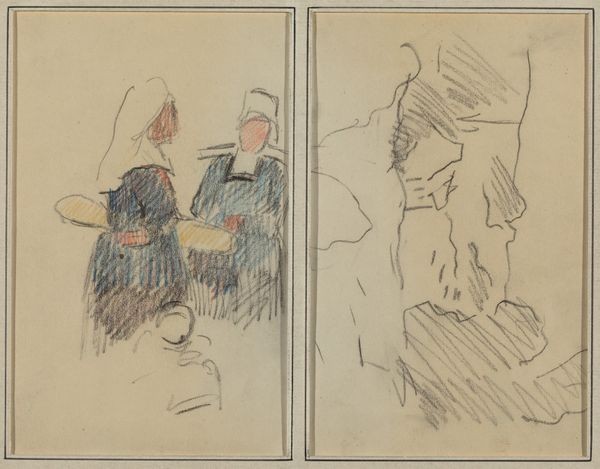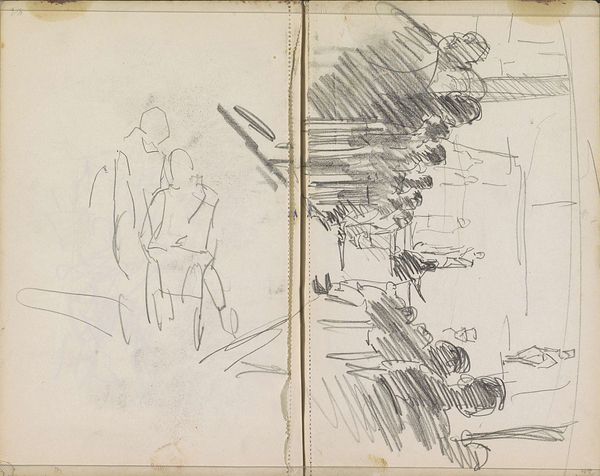![Five Studies of Soldiers and a Woman's Face; Two Figures [recto] by Paul Gauguin](/_next/image?url=https%3A%2F%2Fd2w8kbdekdi1gv.cloudfront.net%2FeyJidWNrZXQiOiAiYXJ0ZXJhLWltYWdlcy1idWNrZXQiLCAia2V5IjogImFydHdvcmtzL2IwZDExM2YzLWNkZDUtNDM2ZC1hZTY5LTVmNzIxMmI4NzFhNy9iMGQxMTNmMy1jZGQ1LTQzNmQtYWU2OS01ZjcyMTJiODcxYTdfZnVsbC5qcGciLCAiZWRpdHMiOiB7InJlc2l6ZSI6IHsid2lkdGgiOiAxOTIwLCAiaGVpZ2h0IjogMTkyMCwgImZpdCI6ICJpbnNpZGUifX19&w=3840&q=75)
Five Studies of Soldiers and a Woman's Face; Two Figures [recto] 1884 - 1888
0:00
0:00
drawing, pencil
#
portrait
#
drawing
#
imaginative character sketch
#
toned paper
#
light pencil work
#
impressionism
#
pencil sketch
#
figuration
#
personal sketchbook
#
character sketch
#
ink drawing experimentation
#
pencil
#
sketchbook drawing
#
storyboard and sketchbook work
#
sketchbook art
Dimensions: overall: 16.9 x 22.7 cm (6 5/8 x 8 15/16 in.)
Copyright: National Gallery of Art: CC0 1.0
Editor: This is Paul Gauguin's "Five Studies of Soldiers and a Woman's Face," created between 1884 and 1888 using pencil. The figures are quickly sketched and layered on the page. I’m struck by the artist’s process. It feels so immediate and exploratory. What do you see in this piece? Curator: Beyond the surface, this sketchbook offers a glimpse into the economics and material realities shaping Gauguin's art. Look at the paper, likely inexpensive, and the use of readily available pencil. It suggests an artmaking rooted in necessity. We aren’t just looking at preliminary sketches, but at the everyday working life of an artist making strategic material choices. Editor: That's fascinating! So, rather than a study for something grander, it’s revealing the economic conditions of his practice? Do you think the militaristic figures might also comment on the era’s political climate? Curator: Precisely. These figures, likely inspired by popular imagery, were then filtered through Gauguin's hand, implicating the artist in the societal forces. Consider the paper: what kind was it? Where was it produced, and who consumed it? Similarly, what socio-economic conditions were the labor force making uniforms, or enlisting in the army? Editor: So, examining the materiality of even a simple drawing can expose larger economic and political relationships? Curator: Absolutely. It challenges the romanticized notion of the solitary genius. It situates Gauguin within a web of production and consumption. These drawings point to larger conversations surrounding labor and artistic creation. Editor: I see! I initially just looked at it as practice. It makes me consider all the elements that can go unnoticed. Curator: And I suppose, by making this work visible as an artistic study, its elements challenge notions of craft. Perhaps then we’re able to broaden our understanding about how the materials speak for an epoch of our social fabric.
Comments
No comments
Be the first to comment and join the conversation on the ultimate creative platform.
